Göhren, Rügen
Göhren | |
|---|---|
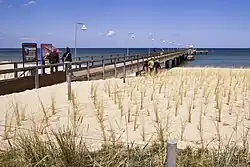 Pier of Göhren on Rügen Island | |
Location of Göhren within Vorpommern-Rügen district 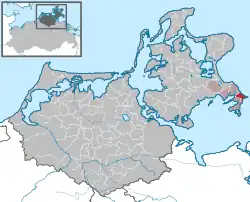 | |
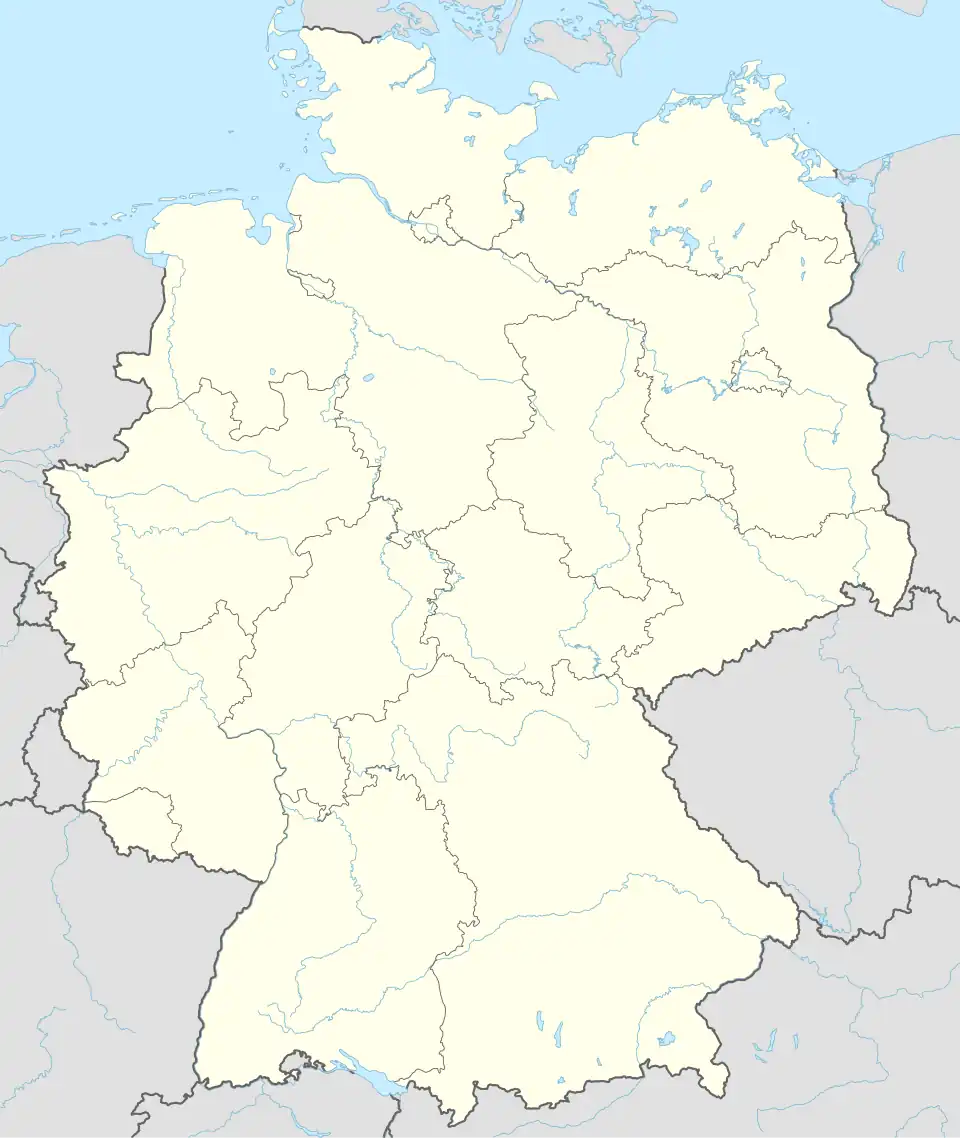 Göhren 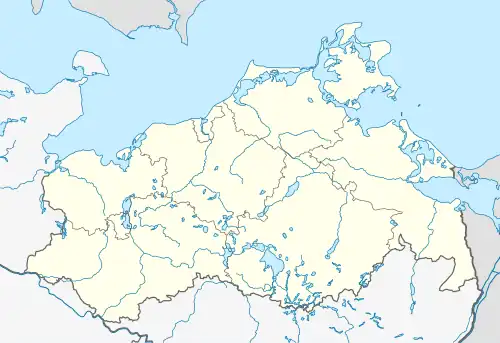 Göhren | |
| Coordinates: 54°20′N 13°44′E / 54.333°N 13.733°E | |
| Country | Germany |
| State | Mecklenburg-Vorpommern |
| District | Vorpommern-Rügen |
| Municipal assoc. | Mönchgut-Granitz |
| Government | |
| • Mayor | Olaf Neugebauer (CDU) |
| Area | |
• Total | 7.42 km2 (2.86 sq mi) |
| Elevation | 0 m (0 ft) |
| Population (2023-12-31)[1] | |
• Total | 1,256 |
| • Density | 170/km2 (440/sq mi) |
| Time zone | UTC+01:00 (CET) |
| • Summer (DST) | UTC+02:00 (CEST) |
| Postal codes | 18586 |
| Dialling codes | 038303, 038308 |
| Vehicle registration | RÜG |
| Website | www.amt-moenchgut.de |
Göhren (German pronunciation: [ˈɡøːʁən]) is a municipality in the Vorpommern-Rügen district, in Mecklenburg-Vorpommern, Germany.
Geography
The municipality of Göhren adjoins the easternmost point of the island of Rugen: Cape Nordperd. It separates the North Beach (Nordstrand) from the South Beach (Südstrand). The North Beach is the actual bathing beach with a seaside promenade. Between Göhren Pier and the Nordperd lies the Buskam, the largest glacial erratic boulder in North Germany, which rises one metre about the sea.
Sights
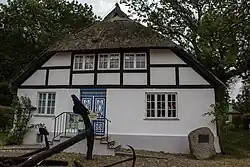
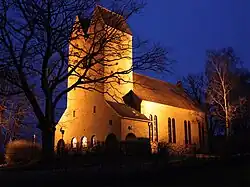
- Göhren Pier was rebuilt in the 1990s. It is 270 metres long.
- Speckbusch Barrow (Hügelgrab Speckbusch) is next to Göhren church and dates to the Bronze Age.
- The Mönchguter Museums are four museums that are protected and, together, form an open-air museum. There is a local history museum, the motor yacht Luise, the museum farm (since 1973), and a thatched fisherman's house, the Rookhuus.
- The Drachenhaus was the last home and workshop of the "Poet of the Baltic" and important playwright, Max Dreyer.
- Buskam: the largest glacial erratic in Germany is located ca. 300 metres offshore, east of Göhren.
- Memorial for the victims of Action Rose in 1953 on the Baltic Sea (Hotel Seestern, Poststraße 10)
- Göhren Village Church dates to the 20th century (1929/30).
- The area monument, the Hessenlager, on the road to Lobbe is an 1812 military camp.
- The beaches have a total length of 5 km and merge into each other.
- North Beach (Nordstrand): up to 30-metre-wide, white, fine-sand beach with a 270-metre-long pier
- South Beach (Südstrand): rockier and narrower beach,[2] which runs to Lobbe.
References
- ^ "Statistisches Amt M-V – Bevölkerungsstand der Kreise, Ämter und Gemeinden 2023" (XLS) (in German). Statistisches Amt Mecklenburg-Vorpommern.
- ^ "Ostseebad Göhren". www.ruegen.de (in German). Archived from the original on 2016-06-04. Retrieved 2016-05-04.
External links
![]() Media related to Göhren (Rügen) at Wikimedia Commons
Media related to Göhren (Rügen) at Wikimedia Commons